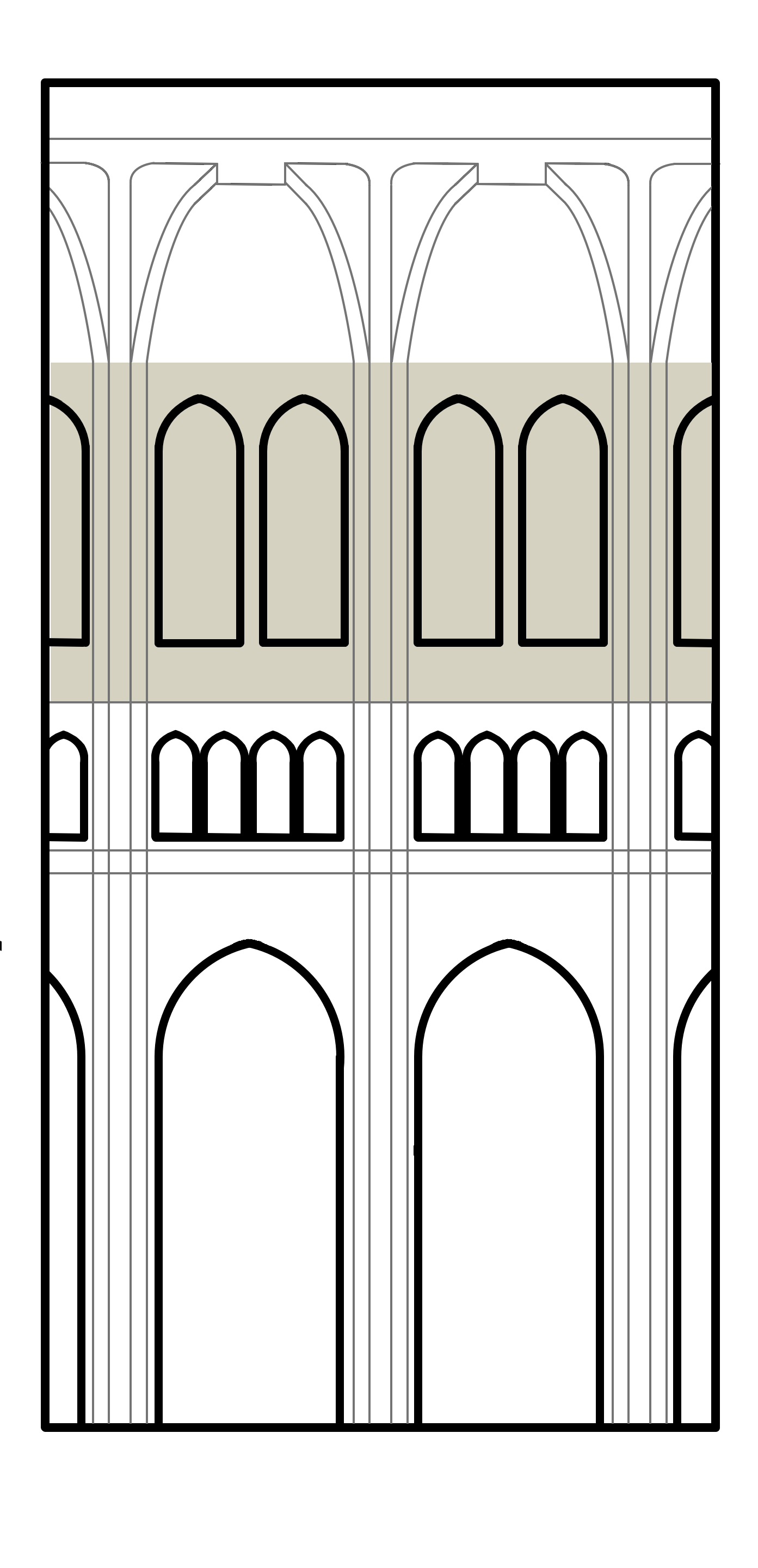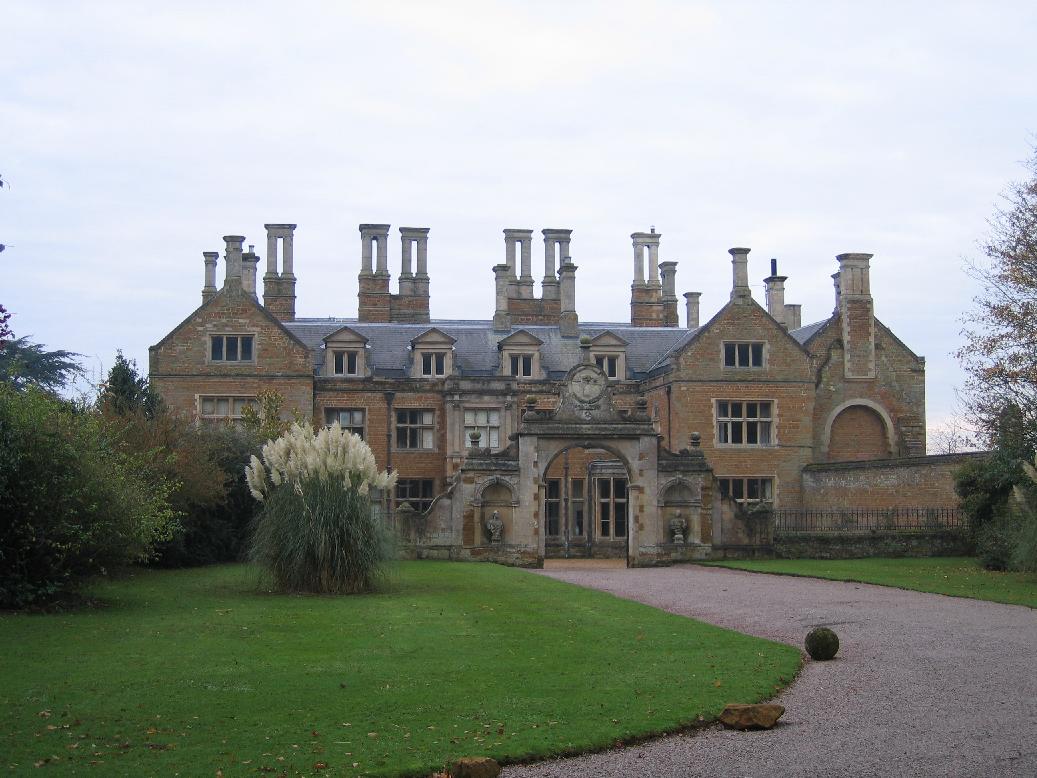|
Richard Carpenter (architect)
Richard Herbert Carpenter (July 1841 – 18 April 1893) was an English Gothic Revival architect. Carpenter was born 1841 in St Pancras, England, the son of the tractarian architect Richard Cromwell Carpenter and his wife Amelia. He is best known for his collaboration with Benjamin Ingelow; their architectural practice, founded by Carpenter's father and based in Marylebone, London, was responsible for the construction or of many ecclesiastical properties. Biography Carpenter attended Charterhouse School and began his architectural career working with his late father's partner William Slater. Following Slater's death in 1872, Carpenter went into partnership with the chief assistant in the practice, Benjamin Ingelow. Carpenter worked as architect to Ardingly College following the school's purchase of a site at Ardingly in 1862. He was taken into partnership with Slater in 1863 and was admitted ARIBA on 15 June of that year, his proposers being Slater, Mair and the St Pancr ... [...More Info...] [...Related Items...] OR: [Wikipedia] [Google] [Baidu] |
St Pancras, London
St Pancras () is a district in North London. It was originally a medieval Civil parish#Ancient parishes, ancient parish and subsequently became a metropolitan borough. The metropolitan borough then merged with neighbouring boroughs and the area now forms around half of the modern London Borough of Camden. The area of the parish and borough extends nearly four miles in a north-south axis, between Islington in the east and Marylebone and Hampstead in the west. It take in the sub-districts of Camden Town, Kentish Town, Gospel Oak, Somers Town, London, Somers Town, King's Cross, London, King's Cross, Chalk Farm, Dartmouth Park, the core area of Fitzrovia and a part of Highgate. History St Pancras Old Church St Pancras Old Church lies on Pancras Road, Somers Town, London, Somers Town, behind St Pancras railway station. Until the 19th century it stood on a knoll on the eastern bank of the now buried River Fleet. The church, dedicated to the Roman martyr Pancras of Rome, Saint Pa ... [...More Info...] [...Related Items...] OR: [Wikipedia] [Google] [Baidu] |
Clerestory
A clerestory ( ; , also clearstory, clearstorey, or overstorey; from Old French ''cler estor'') is a high section of wall that contains windows above eye-level. Its purpose is to admit light, fresh air, or both. Historically, a ''clerestory'' formed an upper level of a Roman basilica or of the nave of a Romanesque architecture, Romanesque or Gothic architecture, Gothic church (building), church, the walls of which rise above the rooflines of the lower aisles and which are pierced with windows. In addition to architecture, #Transportation, clerestories have been used in transportation vehicles such as buses and trains to provide additional lighting, ventilation, or headroom. History Ancient world Clerestories appear to originate in Egyptian temples, where the lighting of the hall of columns was obtained over the stone roofs of the adjoining aisles, through gaps left in the vertical slabs of stone. They appeared in Egypt at least as early as the Amarna Period. Minoan palaces ... [...More Info...] [...Related Items...] OR: [Wikipedia] [Google] [Baidu] |
James I Of England
James VI and I (James Charles Stuart; 19 June 1566 – 27 March 1625) was King of Scotland as James VI from 24 July 1567 and King of England and Ireland as James I from the union of the Scottish and English crowns on 24 March 1603 until his death in 1625. Although he long tried to get both countries to adopt a closer political union, the kingdoms of Scotland and England remained sovereign states, with their own parliaments, judiciaries, and laws, ruled by James in personal union. James was the son of Mary, Queen of Scots, and a great-great-grandson of Henry VII, King of England and Lord of Ireland, and thus a potential successor to all three thrones. He acceded to the Scottish throne at the age of thirteen months, after his mother was forced to abdicate in his favour. Although his mother was a Catholic, James was brought up as a Protestant. Four regents governed during his minority, which ended officially in 1578, though he did not gain full control of his governmen ... [...More Info...] [...Related Items...] OR: [Wikipedia] [Google] [Baidu] |
Elizabeth I Of England
Elizabeth I (7 September 153324 March 1603) was Queen of England and Ireland from 17 November 1558 until her death in 1603. She was the last and longest reigning monarch of the House of Tudor. Her eventful reign, and its effect on history and culture, gave name to the Elizabethan era. Elizabeth was the only surviving child of Henry VIII and his second wife, Anne Boleyn. When Elizabeth was two years old, her parents' marriage was annulled, her mother was executed, and Elizabeth was declared illegitimate. Henry restored her to the line of succession when she was 10. After Henry's death in 1547, Elizabeth's younger half-brother Edward VI ruled until his own death in 1553, bequeathing the crown to a Protestant cousin, Lady Jane Grey, and ignoring the claims of his two half-sisters, Mary and Elizabeth, despite statutes to the contrary. Edward's will was quickly set aside and the Catholic Mary became queen, deposing Jane. During Mary's reign, Elizabeth was imprisoned fo ... [...More Info...] [...Related Items...] OR: [Wikipedia] [Google] [Baidu] |
Christopher Hatton
Sir Christopher Hatton (12 December 1540 – 20 November 1591) was an English politician, Lord Chancellor of England and a favourite of Elizabeth I of England. He was one of the judges who found Mary, Queen of Scots guilty of treason. Early years Sir Christopher was the second son of William Hatton (died 28 August 1546) of Holdenby, Northamptonshire, and his second wife, Alice Saunders, daughter of Lawrence Saunders (died 1544) of Harrington, Northamptonshire. His wife, Alice Brokesby was the daughter of Robert Brokesby (died 28 March 1531) of Shoby, Leicestershire, and of Alice Shirley. On his father's side, the Hatton pedigree is said to be "traced beyond records". In the reign of Henry VII, Henry Hatton of Quisty Birches in Cheshire married Elizabeth, sole heiress of William Holdenby of Holdenby, Northamptonshire. Their son, John Hatton, settled at Holdenby and had three sons, of whom Christopher Hatton's father, William, was the eldest. He is said to have had two brot ... [...More Info...] [...Related Items...] OR: [Wikipedia] [Google] [Baidu] |
Country House
image:Blenheim - Blenheim Palace - 20210417125239.jpg, 300px, Blenheim Palace - Oxfordshire An English country house is a large house or mansion in the English countryside. Such houses were often owned by individuals who also owned a Townhouse (Great Britain), town house. This allowed them to spend time in the country and in the city—hence, for these people, the term distinguished between town and country. However, the term also encompasses houses that were, and often still are, the full-time residence for the landed gentry who dominated rural Britain until the Reform Act 1832. Frequently, the formal business of the Historic counties of England, counties was transacted in these country houses, having functional antecedents in manor houses. With large numbers of indoor and outdoor staff, country houses were important as places of employment for many rural communities. In turn, until the Great Depression of British Agriculture, agricultural depressions of the 1870s, the est ... [...More Info...] [...Related Items...] OR: [Wikipedia] [Google] [Baidu] |
Holdenby House
Holdenby House is a historic country house in Northamptonshire, traditionally pronounced, and sometimes spelt, Holmby. The house is situated in the parish of Holdenby, six miles (10 km) northwest of Northampton and close to Althorp. It is a Grade II* listed building. History The house was completed in 1583 by the Elizabethan Lord Chancellor, Sir Christopher Hatton, who refused to sleep a night in the mansion until Queen Elizabeth I had slept there. Thomas Heneage stayed at Holdenby in July 1583, and wrote to Hatton, congratulating him on the completion of "the best house that hath been built in this age". It was one of the largest prodigy houses of the Tudor period, rivalling in size both Audley End and Theobalds, and was reputed to occupy approximately 78,750 square feet (7,300 m²), although this probably included the two great courtyards around which it was built. The facades were symmetrical, with mullioned windows and open Doric arcades, reflecting the ... [...More Info...] [...Related Items...] OR: [Wikipedia] [Google] [Baidu] |
Crucifixion
Crucifixion is a method of capital punishment in which the condemned is tied or nailed to a large wooden cross, beam or stake and left to hang until eventual death. It was used as a punishment by the Achaemenid Empire, Persians, Ancient Carthage, Carthaginians, and Roman Empire, Romans, among others. Crucifixion has been used in some countries as recently as the 21st century. The crucifixion of Jesus is central to Christianity and the Christian cross, cross (in Catholic Church, Roman Catholicism usually crucifix, depicted with Jesus nailed to it) is Christianity's preeminent religious symbol. His death is the most prominent example of crucifixion in history, which in turn has led many cultures in the modern world to associate the execution method closely with Jesus and with Christian spirituality. Other figures in Christianity are traditionally believed to have undergone crucifixion as well, including Saint Peter, who was crucified upside-down, and Andrew the Apostle, Saint Andr ... [...More Info...] [...Related Items...] OR: [Wikipedia] [Google] [Baidu] |
Reredos
A reredos ( , , ) is a large altarpiece, a screen, or decoration placed behind the altar in a Church (building), church. It often includes religious images. The term ''reredos'' may also be used for similar structures, if elaborate, in secular architecture, for example very grand carved chimneypieces. It also refers to a simple, low stone wall placed behind a hearth. Description A reredos can be made of stone, wood, metal, ivory, or a combination of materials. The images may be painted, carved, gilded, composed of mosaics, and/or embedded with Niche (architecture), niches for statues. Sometimes a tapestry or another fabric such as silk or velvet is used. Derivation and history of the term ''Reredos'' is Etymology, derived through Middle English from the 14th-century Anglo-Norman ''areredos'', which in turn is from''arere'' 'behind' +''dos'' 'back', from Latin . (Despite its appearance, the first part of the word is not formed by doubling the prefix "re-", but by an archaic spell ... [...More Info...] [...Related Items...] OR: [Wikipedia] [Google] [Baidu] |
Byzantine Empire
The Byzantine Empire, also known as the Eastern Roman Empire, was the continuation of the Roman Empire centred on Constantinople during late antiquity and the Middle Ages. Having survived History of the Roman Empire, the events that caused the fall of the Western Roman Empire in the 5th centuryAD, it endured until the fall of Constantinople to the Ottoman Empire in 1453. The term 'Byzantine Empire' was coined only after its demise; its citizens used the term 'Roman Empire' and called themselves 'Romans'. During the early centuries of the Roman Empire, the western provinces were Romanization (cultural), Latinised, but the eastern parts kept their Hellenistic culture. Constantine the Great, Constantine I () legalised Christianity and moved the capital to Constantinople. Theodosius I, Theodosius I () made Christianity the state religion and Greek gradually replaced Latin for official use. The empire adopted a defensive strategy and, throughout its remaining history, expe ... [...More Info...] [...Related Items...] OR: [Wikipedia] [Google] [Baidu] |
Apse
In architecture, an apse (: apses; from Latin , 'arch, vault'; from Ancient Greek , , 'arch'; sometimes written apsis; : apsides) is a semicircular recess covered with a hemispherical Vault (architecture), vault or semi-dome, also known as an ''exedra''. In Byzantine architecture, Byzantine, Romanesque architecture, Romanesque, and Gothic architecture, Gothic Architecture of cathedrals and great churches, Christian church architecture, church (including cathedral and abbey) architecture, the term is applied to a semi-circular or polygonal termination of the main building at the liturgical east and west, liturgical east end (where the altar is), regardless of the shape of the roof, which may be flat, sloping, domed, or hemispherical. Smaller apses are found elsewhere, especially in shrines. Definition An apse is a semicircular recess, often covered with a hemispherical vault. Commonly, the apse of a church, cathedral or basilica is the semicircular or polygonal termination to the ... [...More Info...] [...Related Items...] OR: [Wikipedia] [Google] [Baidu] |
Vault (architecture)
In architecture, a vault (French ''voûte'', from Italian ''volta'') is a self-supporting arched form, usually of stone or brick, serving to cover a space with a ceiling or roof. As in building an arch, a temporary support is needed while rings of voussoirs are constructed and the rings placed in position. Until the topmost voussoir, the Keystone (architecture), keystone, is positioned, the vault is not self-supporting. Where timber is easily obtained, this temporary support is provided by centering consisting of a framed truss with a semicircular or Circular segment, segmental head, which supports the voussoirs until the ring of the whole arch is completed. The Mycenaean Greece, Mycenaeans (ca. 18th century BC, 1800–1050s BC, 1050 BC) were known for their Tholos (architecture), tholos tombs, also called beehive tombs, which were underground structures with conical vaults. This type of vault is one of the earliest evidences of curved brick architecture without the use of ston ... [...More Info...] [...Related Items...] OR: [Wikipedia] [Google] [Baidu] |









